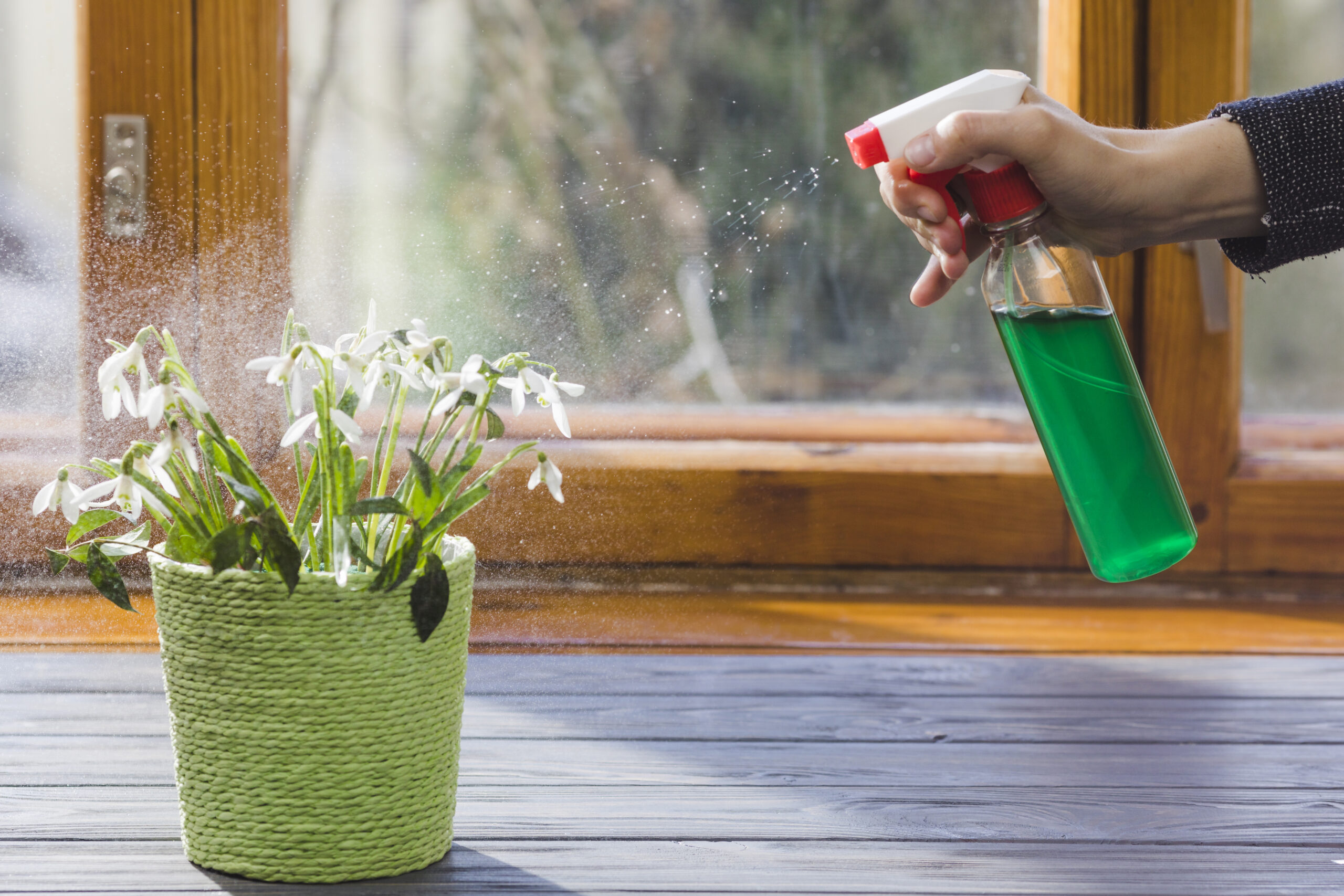Indroduction
If you’re anything like me, dealing with gnats in your house can drive you up the wall. One minute, you’re sipping coffee and enjoying your beautiful houseplants. The next, you’re swatting at tiny, annoying gnats zigzagging through your kitchen, bathroom, or hovering around your favorite monstera. I know how it feels—those pesky bugs seem to multiply overnight and can quickly go from a minor nuisance to a downright infestation.
If you’re asking yourself questions like “How do I get rid of gnats in my house quickly?” or “How can I eliminate gnats in houseplants without hurting my plants?”—breathe easy. I’ve been there, tested the remedies, and gathered almost every trick in the book. Today, I’m here to share tried-and-true, natural, and effective solutions to banish gnats from your home for good.
Let’s make your home fresh, clean, and gnat-free again!
10 Natural Remedies for Gnat Infestation
Ready to kick out those annoying gnats in your home? These remedies don’t just mask the problem—they target gnats at the source. I’m sharing my absolute favorite high-impact, non-toxic techniques to get rid of gnats in the house, protect your plants, and give you much-needed peace of mind.
Understanding Gnats
What are Gnats?
Gnats are those teensy-weensy flying insects that seem harmless… until they colonize your kitchen or invade your precious indoor plants. The term “gnat” actually refers to several small fly species. Most commonly, you’ll meet fungus gnats (in your soil), fruit flies (around ripening fruit), and drain flies (in damp bathrooms).
They’re drawn to moisture, organic material, and—ugh—rotting food. While they don’t bite, gnats in your home can spread germs, damage houseplants, and test your patience like no other.
Types of Gnats
You’ll most likely encounter these types:
- Fungus Gnats: Love damp soil in houseplants. Tiny, delicate, usually black or grey.
- Fruit Flies: Brownish, with big red eyes; love overripe produce.
- Drain Flies: Fuzzy, moth-like, and hang around sinks, drains, and showers.
Knowing the type helps you figure out how to get rid of gnats fast and keep them away for good.
Life Cycle of Gnats
Gnats have a rapid life cycle—just 18 to 30 days from egg to adult. One female gnat can lay up to 200 eggs at a time (yikes!). That’s why a small problem explodes into an infestation so quickly, especially if you’re overwatering plants or leaving food uncovered.
Gnats thrive in moist, organic matter. Think: wet soil, garbage, kitchen spills, and clogged drains. Knowing how and where they breed is the first step in winning the battle.
Identifying Gnat Infestation
Signs of Gnats in the House
Ever noticed clouds of tiny black flies swarming around fruit bowls, garbage pails, or the kitchen sink? That’s your first sign. Here are other red flags:
- Gnats flying near food, fruit, or juice spills
- Gnats congregating near your windows or light fixtures
- Sightings near trash cans, compost piles, or drains
Don’t ignore the first fluttering signs! Acting swiftly is key to preventing an overwhelming gnat infestation.
How to Identify Gnats in Plants
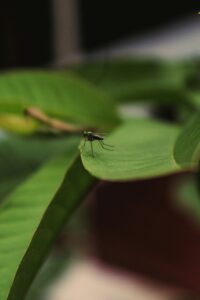
If your houseplants look droopy or you see tiny flies hovering above the soil whenever you water, you’ve likely got fungus gnats. Look for:
- Tiny, black, mosquito-like bugs crawling on top of potting soil
- Sticky residue on leaves
- Larvae (whitish, wormy creatures) in the top inch of wet soil
Gnats love moist soil, so overwatering is often to blame. Don’t worry—I’ll show you how to get rid of gnats in plants and restore your leafy babies.
10 Natural Remedies to Get Rid of Gnats
1. Apple Cider Vinegar Trap
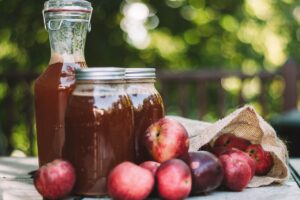
This is my go-to solution for getting rid of gnats in the house. Pour a bit of apple cider vinegar into a small bowl, add a drop of dish soap, and cover with plastic wrap punched with tiny holes. The sweet scent lures gnats in, and the soapy surface traps them.
Place these traps where gnats are most active—near fruit, trash cans, or high-traffic kitchen zones. Swap out daily for maximum effect.
2. Dish Soap and Water Solution
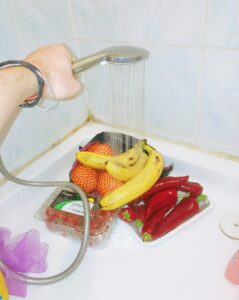
For a quick fix, mix a few drops of mild dish soap into a spray bottle with warm water. Spritz surfaces where gnats gather, or use on affected houseplants. The soap suffocates eggs and adults alike—super effective and entirely plant-safe!
3. Essential Oils Spray

Certain scents repel gnats, making essential oil sprays a natural way to keep gnats out of your house. Try eucalyptus, tea tree, peppermint, or lavender oil. I add 10–15 drops to a water-filled spray bottle, then mist windowsills, plant leaves, and door jambs.
Your home will smell heavenly—and gnats will head for the hills.
4. Yellow Sticky Traps
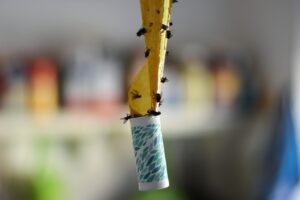
If your gnats are primarily hanging around plants, yellow sticky traps are an absolute game-changer. Gnats are drawn to the color yellow. Place sticky cards near houseplants or cut them into strips for window sills. They’ll quickly fill with dozens of gnats, breaking the breeding cycle.
Yellow sticky traps are inexpensive and chemical-free, making them a must-have for indoor gardeners.
5. Neem Oil for Soil Infestation
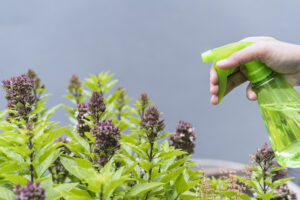
Neem oil is my secret weapon for how to get rid of fungus gnats in houseplants. It’s a natural pesticide and safe for both soil and leaves. Mix according to the package directions and water your plants with the diluted solution. Neem attacks gnat larvae below the soil, stopping future infestations in their tracks.
Repeat every seven days until you no longer spot gnats. As a bonus, neem deters spider mites and aphids, too.
6. Cinnamon Dust for Soil
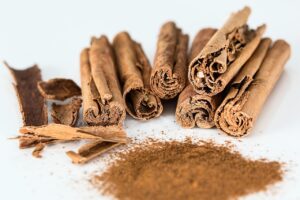
Fungus gnats despise cinnamon! Lightly dust the soil of affected plants with ground cinnamon. This natural antifungal disrupts larval growth and helps dry out the topsoil, making it less hospitable for gnats. Bonus: your room will smell like a cinnamon bun bakery. Yum.
7. Hydrogen Peroxide Soil Flush
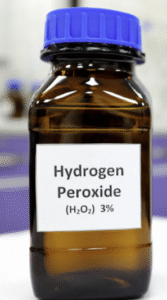
For gnat infestations in plants, mix one part 3% hydrogen peroxide with four parts water. Slowly water your houseplants with this solution. You’ll hear a fizzy sound—don’t worry, that’s the peroxide reacting with the soil. It kills larvae and eggs on contact, leaving your plant roots healthy and happy.
Repeat once a week until all signs of gnats are gone.
8. Banana Peel Trap
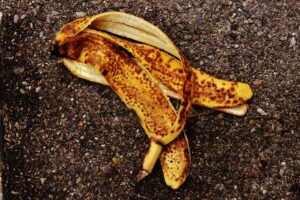
Gnats LOVE the smell of ripe banana. Place a piece of banana peel in a jar, cover with plastic wrap, and poke small holes in the top. Gnats fly in for the sweet treat and can’t get back out, turning your banana waste into a highly effective gnat trap.
9. Coffee Grounds

Sprinkle used coffee grounds on top of your houseplant soil. Gnats hate caffeine, and the grounds add nutrients to the soil, win-win! Just be sure not to overdo it—too much can make the soil too acidic.
10. Rubbing Alcohol Solution
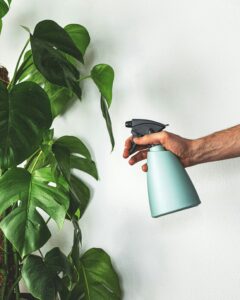
Mix equal parts water and rubbing alcohol (70%) in a spray bottle. Lightly mist plant leaves and soil to kill gnats and their larvae. Avoid soaking the soil—alcohol is strong, so test on a small section first. This quick-fix is especially handy for persistent infestations.
How to Get Rid of Gnats Quickly
Immediate Actions to Take
Feeling overwhelmed by gnats in your house? Take these immediate steps for fast relief:
- Remove overripe fruit: Clean countertops and store fruit in the fridge.
- Take out the trash: Seal garbage tightly and empty daily.
- Clean drains and sinks: Pour boiling water, baking soda, or vinegar down drains to kill eggs.
- Water plants less: Let soil dry out between waterings.
- Wipe surfaces: Gnats are drawn to sugary spills and food residue.
If you work fast and use multiple techniques, you’ll see results in a day or two!
Preventive Measures
After you get rid of gnats in your house, prevention is your new BFF. Here’s what keeps gnats away long-term:
- Use well-draining soil and pots. Gnats thrive in soggy conditions.
- Allow the top inch of soil to dry before watering houseplants.
- Cover sink drains or add a cup of vinegar after heavy use.
- Store produce in airtight containers or in the fridge.
- Empty trash and compost bins regularly.
- Rotate traps to stay ahead—don’t give gnats a chance to rebound!
Conclusion
Recap of Natural Remedies
From apple cider vinegar traps to essential oil sprays, neem oil, and even coffee grounds, you now have a full toolbox for how to get rid of gnats in the house, in your plants, and protect your home from future infestations. With just a few household ingredients and a bit of consistency, it’s easy to reclaim your space and enjoy a gnat-free home once again.
Encouragement to Maintain Gnat-Free Spaces
Remember, you’ve got this! By taking swift, natural action, you can banish gnats and enjoy your beautiful, healthy home and houseplants—without harmful chemicals. Prevention is key, so make these tips part of your weekly routine. Say goodbye to gnats in home life for good!
If you enjoyed this article, don’t forget to save it on Pinterest or share it with a friend! Here’s to fewer pests and more peace in your home. Happy gnat-busting!

